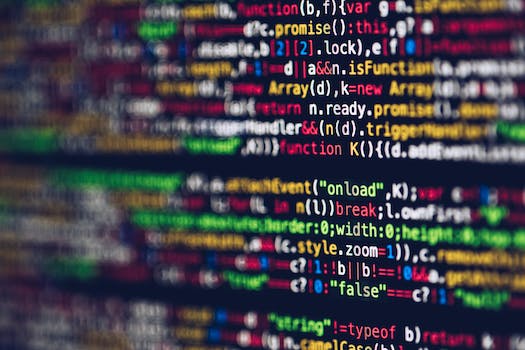

-
Table of Contents
Unraveling JavaScript Obfuscation: Mastering Scramblers with Advanced Internal Techniques
Introduction
Unraveling JavaScript Obfuscation: Tackling Scramblers with Advanced Internal Techniques is a comprehensive guide that focuses on understanding and overcoming the challenges posed by obfuscated JavaScript code. This book delves into the intricacies of JavaScript obfuscation techniques, such as scramblers, and provides advanced internal techniques to effectively analyze and deobfuscate such code. By unraveling the obfuscation, developers and security professionals can gain insights into the underlying functionality and identify potential vulnerabilities or malicious behavior. This book serves as a valuable resource for those seeking to enhance their understanding of JavaScript obfuscation and strengthen their ability to tackle complex obfuscated code.
Understanding the Basics of JavaScript Obfuscation
JavaScript obfuscation is a technique used by developers to protect their code from being easily understood or reverse-engineered. By obfuscating the code, developers can make it more difficult for hackers or competitors to steal or modify their intellectual property. In this article, we will delve into the basics of JavaScript obfuscation and explore some advanced internal techniques for unraveling obfuscated code.
To understand JavaScript obfuscation, it is important to first grasp the concept of obfuscation itself. Obfuscation is the process of transforming code into a form that is difficult to understand, while still maintaining its functionality. This can involve various techniques such as renaming variables and functions, adding unnecessary code, or using complex algorithms to obfuscate the logic.
One common technique used in JavaScript obfuscation is variable and function renaming. By replacing meaningful names with random or meaningless ones, the code becomes much harder to comprehend. For example, a variable named "password" could be obfuscated to something like "a1b2c3d4". This makes it challenging for anyone reading the code to understand its purpose or manipulate it.
Another technique employed in JavaScript obfuscation is code insertion. This involves adding unnecessary or redundant code to the script, making it more convoluted and difficult to follow. For instance, a simple function that calculates the sum of two numbers could be obfuscated by adding multiple unnecessary loops and conditional statements. This not only makes the code harder to understand but also increases its size, making it more time-consuming to analyze.
Furthermore, JavaScript obfuscation can also involve the use of complex algorithms to obfuscate the logic of the code. This can include techniques such as encryption, encoding, or even custom obfuscation algorithms. By applying these techniques, the code becomes even more challenging to decipher, as the logic is hidden behind layers of complexity.
Now that we have a basic understanding of JavaScript obfuscation, let's explore some advanced internal techniques for unraveling obfuscated code. One approach is to use a JavaScript deobfuscator, which is a tool specifically designed to reverse the obfuscation process. These tools can automatically analyze the obfuscated code and transform it back into a more readable form. However, it is important to note that not all obfuscation techniques can be easily reversed, and some may require manual intervention.
Another technique for unraveling obfuscated code is through code analysis. By carefully examining the code and identifying patterns or anomalies, it is possible to gain insights into its functionality. This can involve analyzing variable and function names, identifying code patterns, or even reverse-engineering the obfuscation algorithm itself. Code analysis requires a deep understanding of JavaScript and obfuscation techniques, making it a more advanced approach.
In conclusion, JavaScript obfuscation is a powerful technique used by developers to protect their code from unauthorized access or modification. By obfuscating the code, developers can make it more difficult for hackers or competitors to understand or manipulate their intellectual property. Understanding the basics of JavaScript obfuscation is crucial for unraveling obfuscated code. By employing advanced internal techniques such as using deobfuscators or performing code analysis, it is possible to reverse the obfuscation process and gain insights into the functionality of the code. However, it is important to note that obfuscation techniques are constantly evolving, and staying up-to-date with the latest advancements is essential for effectively tackling obfuscated code.
Exploring Advanced Techniques to Unravel JavaScript Scramblers

Unraveling JavaScript Obfuscation: Tackling Scramblers with Advanced Internal Techniques
JavaScript obfuscation has become a common practice among developers to protect their code from unauthorized access and reverse engineering. By obfuscating the code, developers make it difficult for attackers to understand and modify the underlying logic. However, this practice also poses a challenge for security analysts and researchers who need to analyze and understand the code for various purposes, such as vulnerability assessment and malware analysis.
In this article, we will explore advanced techniques to unravel JavaScript scramblers, which are a type of obfuscation technique commonly used to make the code more complex and harder to understand. By understanding these techniques, security analysts can gain insights into the code's functionality and identify potential vulnerabilities or malicious behavior.
One of the most common techniques used in JavaScript scramblers is string obfuscation. This technique involves replacing meaningful variable and function names with random strings, making it difficult to understand the code's logic. To tackle this, analysts can use static analysis tools that can automatically deobfuscate the code by mapping the obfuscated strings to their original names. These tools leverage various techniques, such as pattern matching and dictionary-based approaches, to identify and replace the obfuscated strings.
Another technique used in JavaScript scramblers is code splitting. This technique involves splitting the code into multiple smaller functions or modules, making it harder to follow the code's execution flow. To tackle this, analysts can use dynamic analysis techniques, such as code tracing and debugging, to understand how the different code fragments interact with each other. By tracing the execution flow, analysts can reconstruct the original code and gain a better understanding of its functionality.
Control flow obfuscation is another commonly used technique in JavaScript scramblers. This technique involves modifying the control flow of the code by introducing conditional statements and loops that are not necessary for the code's functionality. This makes it harder to understand the code's logic and can confuse static analysis tools. To tackle this, analysts can use techniques such as abstract interpretation and symbolic execution to analyze the code's control flow and identify the unnecessary statements or loops. By removing these unnecessary constructs, analysts can simplify the code and gain a clearer understanding of its functionality.
In addition to these techniques, JavaScript scramblers may also use other obfuscation techniques, such as dead code insertion, code encryption, and code compression. Each of these techniques adds an additional layer of complexity to the code, making it harder to understand and analyze. To tackle these techniques, analysts can use a combination of static and dynamic analysis techniques, along with manual code inspection, to unravel the obfuscated code.
It is important to note that while these techniques can help unravel JavaScript scramblers, they may not always provide a complete understanding of the code's functionality. Some obfuscation techniques, such as code encryption, may require additional knowledge or resources to decrypt the code. In such cases, analysts may need to rely on other techniques, such as code emulation or sandboxing, to understand the code's behavior.
In conclusion, JavaScript obfuscation is a common practice used by developers to protect their code. However, it poses a challenge for security analysts and researchers who need to analyze and understand the code. By exploring advanced techniques to unravel JavaScript scramblers, analysts can gain insights into the code's functionality and identify potential vulnerabilities or malicious behavior. These techniques, combined with static and dynamic analysis, can help analysts unravel the obfuscated code and gain a clearer understanding of its logic.
Implementing Internal Strategies for Tackling JavaScript Obfuscation
Unraveling JavaScript Obfuscation: Tackling Scramblers with Advanced Internal Techniques
Implementing Internal Strategies for Tackling JavaScript Obfuscation
JavaScript obfuscation has become a common technique used by malicious actors to hide their code and make it difficult for security analysts to understand and analyze. As a result, it has become increasingly important for organizations to develop effective strategies to tackle this challenge. In this article, we will explore some advanced internal techniques that can be implemented to unravel JavaScript obfuscation.
One of the first steps in tackling JavaScript obfuscation is to understand the different techniques used by attackers. These techniques can range from simple string manipulation to more complex code transformations. By gaining a deep understanding of these techniques, organizations can develop targeted strategies to counter them.
One effective technique for unraveling JavaScript obfuscation is the use of static analysis tools. These tools analyze the code without executing it, allowing analysts to identify patterns and detect obfuscation techniques. By using these tools, organizations can quickly identify and understand the obfuscated code, making it easier to develop countermeasures.
Another technique that can be used is dynamic analysis. This involves executing the obfuscated code in a controlled environment and monitoring its behavior. By observing the code's execution, analysts can gain insights into its functionality and identify any malicious behavior. This technique can be particularly useful in detecting obfuscated code that uses runtime evaluation or code generation.
In addition to static and dynamic analysis, organizations can also employ code deobfuscation techniques. These techniques involve reversing the obfuscation process to restore the original code. This can be achieved through various methods, such as manual analysis or automated tools. By deobfuscating the code, analysts can gain a clearer understanding of its functionality and identify any potential vulnerabilities.
Furthermore, organizations can leverage machine learning algorithms to tackle JavaScript obfuscation. These algorithms can be trained on large datasets of obfuscated code to learn patterns and identify common obfuscation techniques. By using machine learning, organizations can automate the process of detecting and unraveling obfuscated code, saving time and resources.
It is important to note that JavaScript obfuscation techniques are constantly evolving, and attackers are always finding new ways to hide their code. Therefore, organizations must continuously update their strategies and techniques to stay ahead of the game. This can involve staying up to date with the latest research and developments in the field, as well as actively participating in the security community.
In conclusion, tackling JavaScript obfuscation requires a combination of advanced internal techniques. By understanding the different obfuscation techniques used by attackers, organizations can develop targeted strategies to counter them. This can involve the use of static and dynamic analysis tools, code deobfuscation techniques, and machine learning algorithms. However, it is important to remember that JavaScript obfuscation is an ongoing challenge, and organizations must continuously update their strategies to stay ahead of attackers. By implementing these internal strategies, organizations can effectively unravel JavaScript obfuscation and enhance their overall security posture.
Q&A
1. What is JavaScript obfuscation?
JavaScript obfuscation is the process of intentionally making JavaScript code difficult to understand and analyze, typically to protect intellectual property or hide malicious intent.
2. What are scramblers in JavaScript obfuscation?
Scramblers are techniques used in JavaScript obfuscation to transform the code structure and make it harder to comprehend. They can include methods like variable renaming, code splitting, and string manipulation.
3. How can advanced internal techniques help in unraveling JavaScript obfuscation?
Advanced internal techniques involve analyzing the internal behavior of the obfuscated JavaScript code to understand its logic and reverse the obfuscation process. These techniques can include dynamic analysis, control flow analysis, and data flow analysis to reveal the original code's functionality.
Conclusion
In conclusion, tackling JavaScript obfuscation, specifically scramblers, requires advanced internal techniques. These techniques involve analyzing the obfuscated code, understanding the scrambling mechanisms used, and implementing appropriate algorithms to reverse the obfuscation process. By unraveling JavaScript obfuscation, developers can gain insights into the underlying code and enhance security measures against malicious attacks.












